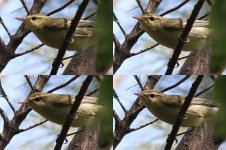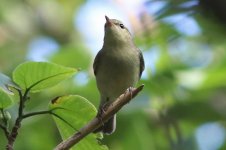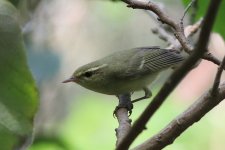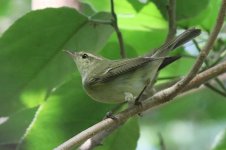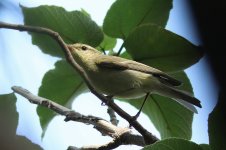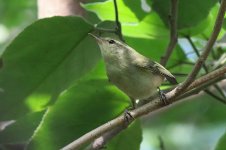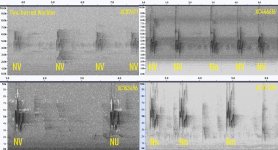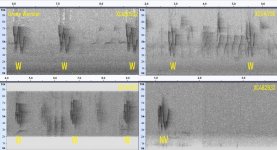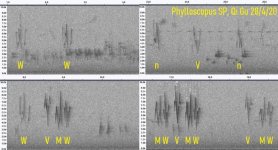Presumably a Two-barred Warbler, I find the colour scheme of this one peculiar (although it may be being affected by surrounding foliage). I’ve only seen autumn Two-barreds before, and they’ve tended to appear a lot more contrasty. The wingbar also looks short.
There were some vocalisations: a trisyllabic 'chir-wee-wee' call note and an abrupt, almost Hartert’s-like ‘pit-su-i’ song note. The call does fit Two-barred, but the plumage still seems odd. Will fresh spring Two-barred look like this?
Vocalisations: https://drive.google.com/file/d/1YdyXbuo-WX_Ho7OKaq5sEFpA4c8BzDlb/view?usp=sharing
There were some vocalisations: a trisyllabic 'chir-wee-wee' call note and an abrupt, almost Hartert’s-like ‘pit-su-i’ song note. The call does fit Two-barred, but the plumage still seems odd. Will fresh spring Two-barred look like this?
Vocalisations: https://drive.google.com/file/d/1YdyXbuo-WX_Ho7OKaq5sEFpA4c8BzDlb/view?usp=sharing




